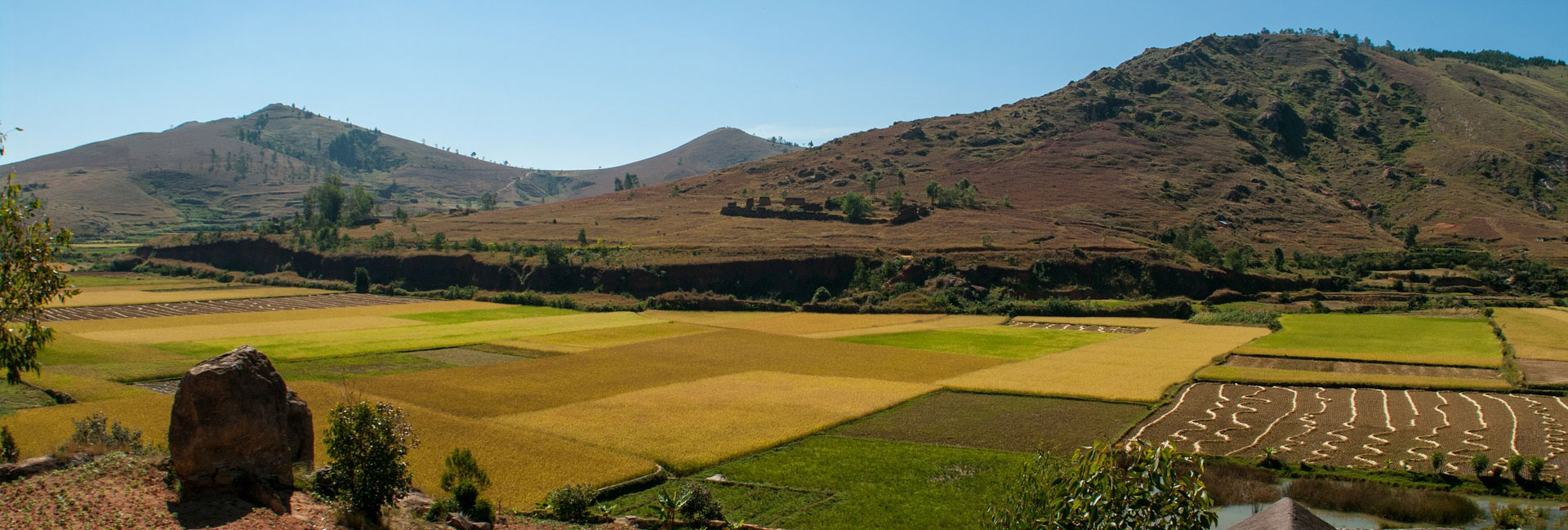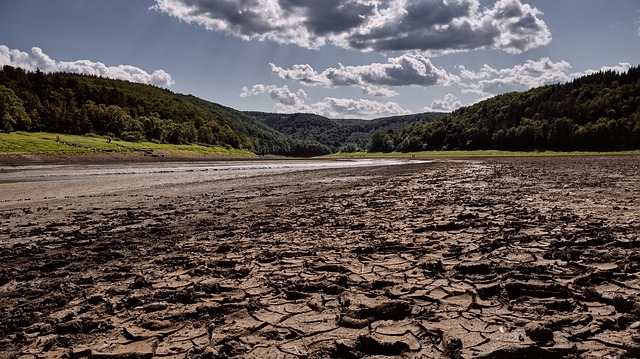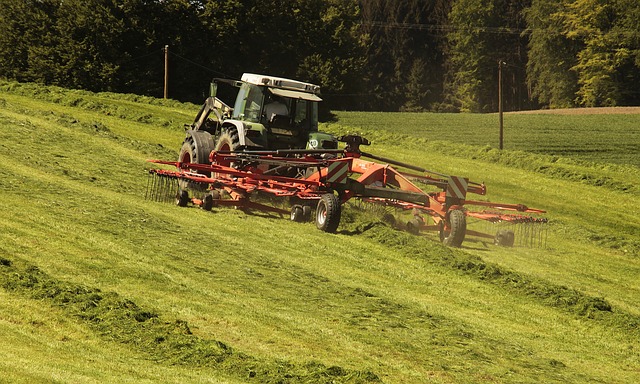Contrary to all predictions, in the 21st century, agriculture has emerged as one of the most pressing issues of our times. Until now, and for centuries, people’s great fear was that they would not be able to produce enough to feed themselves properly. But today, the future of human societies and even the sustainability of life on earth is at stake. Agriculture will not, by itself, solve these problems crucial to the future of humankind. But it can contribute to solving them.
Within this context, agriculture must also respond as positively as can be to four major challenges:
- Feeding 9.7 billion people (as opposed to “only” 7.8 billion today), bearing in mind that over 800 million are currently going hungry.
- Modifying practices to help reduce greenhouse gases and limit global warming.
- Protecting the environment and biodiversity, while securing agricultural yields.
- Ensuring sufficient, regular income for hundreds of millions of men and women who work on the land.
Nobody can argue with the importance of each of these four challenges taken in isolation. The problem is that the objectives to be achieved are, in part, incompatible. Essentially, we must square the circle by conserving core objectives, but by making sacrifices in certain respects.
1- Feeding 9.8 billion people by 2050

In 2015, the FAO estimated that it would be necessary to increase agricultural production by 50% by 2050. It was an ambitious objective, but one which seemed compatible with progress observed in the 20th century. But is it compatible with our three other objectives? Unfortunately, that seems unlikely. Such an increase would require higher agricultural yields, an expansion of agricultural land and an increase in industrial livestock farming.[1]
A significant increase in agricultural production is probably incompatible with the need to reduce greenhouse gases. This is because it would both require continuing to clear forests and cultivating the best grazing lands (both of which are excellent carbon sinks), using large quantities of nitrogen fertilizers (a source of N2O, which is very harmful to the environment, and to increase industrial livestock farming. The FAO also recommends increasing the number of rice fields, particularly in Africa. However, these produce large quantities of methane (CH4), a powerful greenhouse gas whose effects on global warming represent, it has been claimed, over 10% of emissions for the entire agricultural sector.
In this way, increasing agricultural production at the same rate or greater than in the past can only harm the environment and biodiversity. Previous forecasts should therefore be revised more or less extensively, while ensuring people throughout the world are fed enough and healthily.
[1] Despite the size of natural grazing lands worldwide (3,300 million hectares, or almost twice the area of farmland), the potential for production is very low as these are often in arid or semi-arid zones.
Could this ambitious programme be revised downwards?
Reducing obesity and food waste would, in theory, reduce global needs. Indeed, a section of the population in Western countries is already reducing consumption of meat, sugar and oil for health reasons. But we also know that, until now, obesity levels have continued to increase, in particular (but not only) in developing countries. In certain countries, 50% of the population is already overweight. Significant savings are therefore possible in this area, but they currently remain out of reach. However, any improvement in agricultural losses (up to 30% in certain countries) and food waste would represent direct progress in reducing needs.

Tens of millions of hectares of arable land have been assigned to production of cereals, oleaginous grains and sugar cane for ethanol or diester. Abandoning this production would free up land or avoid clearing thousands of additional hectares of forests. For example, the United States uses 300 million tonnes of maize for ethanol production, which requires at least 30 million hectares of good agricultural land. This represents around 2% of arable land worldwide (around 1,600 million hectares). And yet, the USA, the world’s number one producer of petrol, does not need this type of fuel. It could therefore give up ethanol production without any losses, except to producers.
The latest available statistics show that, contrary to the hopes (and objectives) of the FAO, the number of people going hungry, which had dropped to 200 million at the start of the 21st century, is now rising again. In 2017, 821 million people, or one person in nine worldwide, were going hungry. Unfortunately, it seems that this number will remain steady, and may even increase. This will be due to overpopulation (in certain countries in sub-Saharan Africa in particular), climate change and political uncertainty in various countries. If this hypothesis turns out to be true, world food production will automatically drop. This, it goes without saying, is not morally acceptable.
2- Fighting climate change
 Of course, agriculture, like all other economic activities, contributes to the production of greenhouse gases. It is estimated that it accounts for 13.5% of greenhouse gases (30% including downstream businesses). There are many sources of gases: direct consumption of energy by agricultural machines, N2O emissions from nitrogen fertilizers, production of methane… If we want to limit global warming, these emissions must urgently be reduced. Of course, agriculture must play its part, but in what form and in what proportions?
Of course, agriculture, like all other economic activities, contributes to the production of greenhouse gases. It is estimated that it accounts for 13.5% of greenhouse gases (30% including downstream businesses). There are many sources of gases: direct consumption of energy by agricultural machines, N2O emissions from nitrogen fertilizers, production of methane… If we want to limit global warming, these emissions must urgently be reduced. Of course, agriculture must play its part, but in what form and in what proportions?
Can agriculture reduce its greenhouse gas emissions?
As a priority, let’s stop clearing forests or prairies and get better at fighting forest fires, which wipe out millions of hectares every year. Also, let’s avoid setting fire to the vast African savannahs during the dry season.
Simplified agricultural techniques will reduce fuel consumption. These practices are developing rapidly throughout the world. They must continue.
By modifying certain agronomic practices, it is also possible to reduce the use of nitrogen fertilizers and therefore the amount which is emitted into the atmosphere. But it will be difficult to avoid a drop in yields (in countries where these are very high, such as Europe or China), whereas agricultural production must increase because an extra 2 billion people will have to be fed by 2050.
Even though the majority of the 3,300 million hectares of natural grazing lands often have low productivity, too often they are over-exploited. To resolve this situation, flock sizes must be reduced, and grasslands must be restored so that CO2 can be trapped in the soil.
Scientists are researching types of feed which lead to less methane being released by ruminants. This path should be explored further too. It is also possible to reduce animal numbers, for example by eating less red meat or breeding more productive and therefore fewer dairy cows. Think of the millions of cows in India which are virtually unproductive and yet are releasing methane!
3- Protecting the environment and biodiversity
The increase in the size of farms and the widespread use of modern production techniques has harmed the environment, in particular wild flora and fauna. Ever larger plots, the disappearance of hedges, the destruction of humid zones and increased use of crop protection products have led to these phenomena. We now know that their consequences for soil protection, water and air quality, and simply the future of agricultural production are extremely serious and long-lasting. For example, atrazine can still be found in groundwater, even though its use has been forbidden in maize production for 20 years.
However, these difficulties do not mean we should set aside our objectives, even though much work remains to achieve them.
Is it possible to re-build a sustainable environment?
This will be very difficult. Indeed, it is difficult to imagine dividing up huge agricultural plots in new countries to return to a more human scale. However, small or medium farms are better adapted to the preservation of traditional plots and to good use of rural land. These must be protected.

The priority should be to stop clearing forests and cultivate natural grazing lands. However, this is less than ever the direction taken by countries such as Brazil, which are claiming the right to grow their exports of soya, cereals or meat as they please.[1]
In the same way, soil restoration with its flora and fauna is complicated, as it requires completely modifying agricultural methods. This is one of the objectives of organic farming and agro-ecology.
A network of hedges should also be created or brought back around fields. In France, Brittany has already started re-planting some hedges, particularly in catchment areas to prevent chemicals from being swept into rivers. Currently 2,500 kilometres of new hedges are thus planted every year, which is good. But in the 1960s and 1970s, we destroyed 250,000 km of hedges!
All of this can be expensive, pushing up cost prices for agricultural products.[2] While managers of large farms are perfectly able to implement these changes when they are imposed, smaller farmers must be given training in these new techniques.
[1] Based on satellite observations, deforestation has accelerated dangerously in Brazil (+278% between 2018 and 2019).
[2] It should be remembered that, in organic farming, yields are lower than in conventional farming, leading to higher production costs and therefore higher sales prices.



